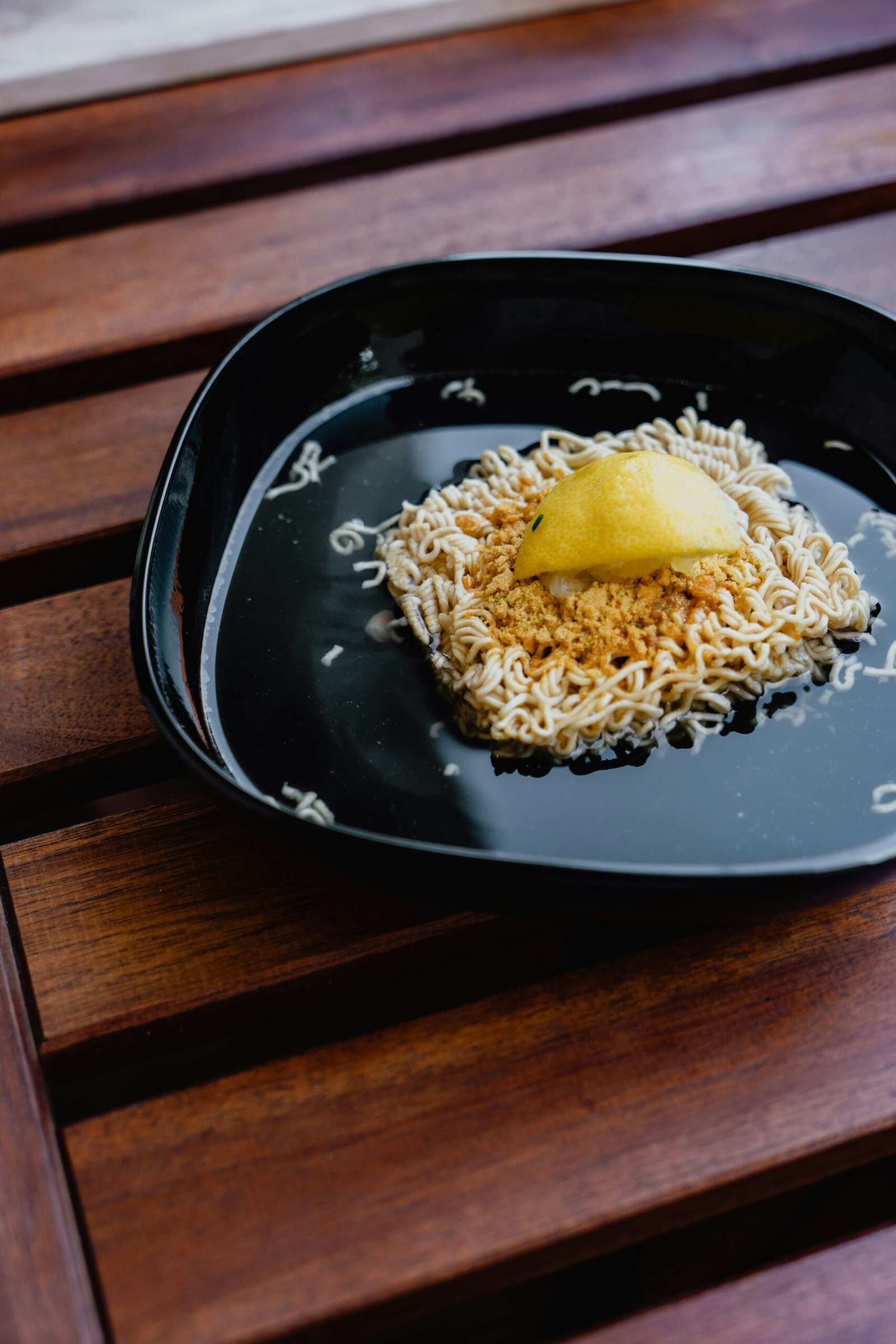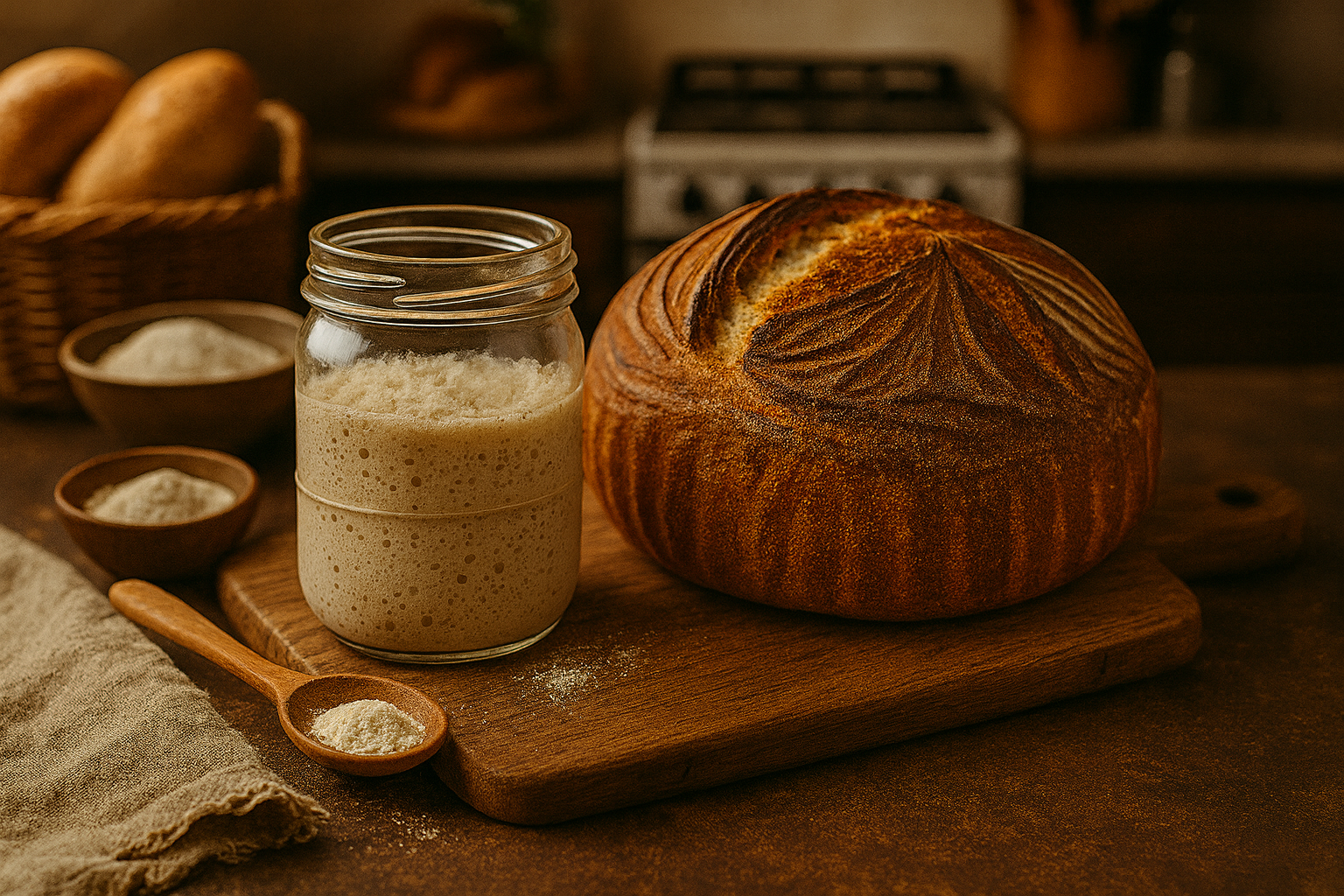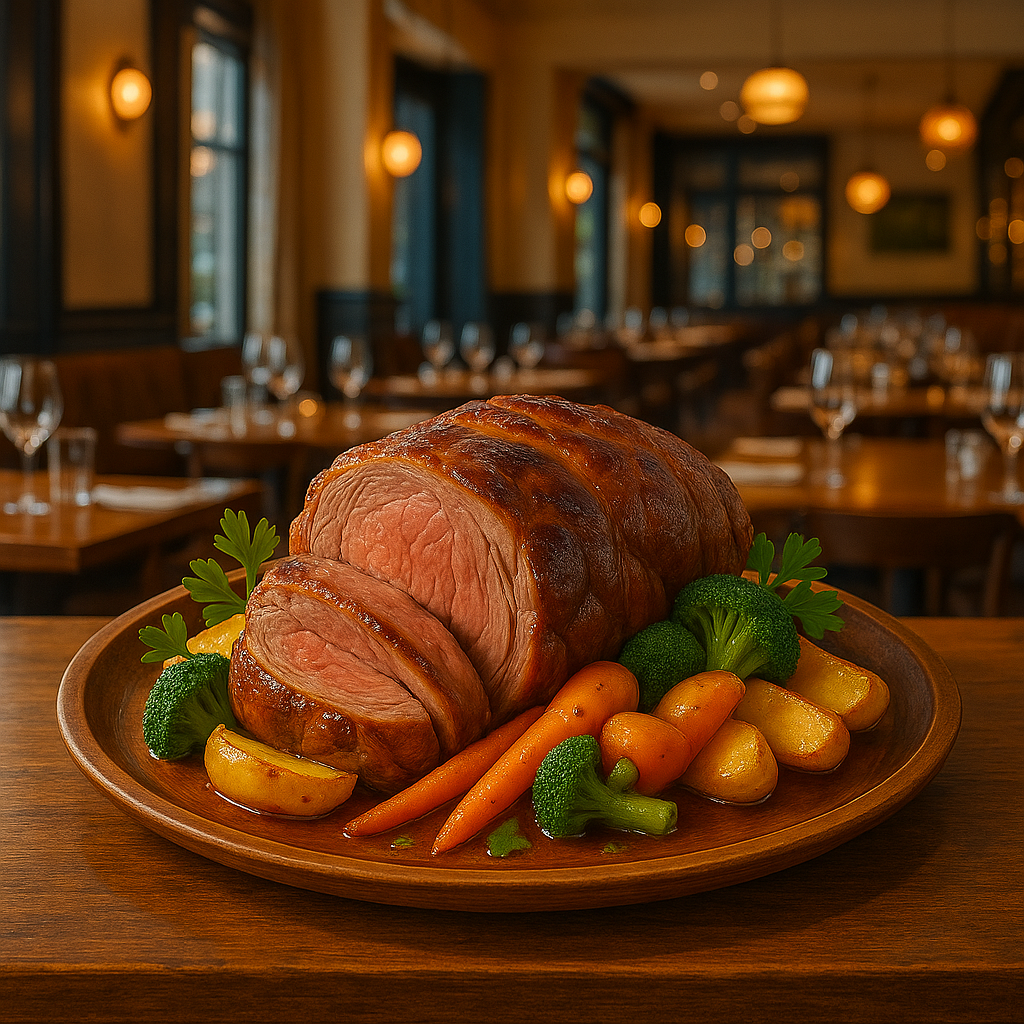Table of Contents

Introduction to Ramen
Ramen, a quintessential dish in Japanese cuisine, has captured the hearts and palates of people around the world. Its journey began in China during the late 19th century, when Chinese immigrants introduced wheat noodles in broth to Japan. Over time, this simple dish underwent significant transformations, adopting local ingredients and techniques, ultimately establishing itself as a staple in Japanese culture. The name “ramen” itself is derived from the Chinese words for pulled noodles, which reflects its historical roots.
The cultural significance of ramen is considerable. It serves not only as a meal but also as a symbol of comfort and community. Ramen shops, or “ramen-ya,” are prevalent across Japan, often characterized by unique styles that vary by region. For instance, Sapporo is renowned for its rich miso ramen, while Hakata is famous for its creamy tonkotsu variety. Each type captures local flavors and traditions, thereby enriching the culinary tapestry of Japan.
As ramen gained traction in Japan, its popularity spread globally, leading to adaptations that incorporate diverse ingredients and cooking methods. This evolution highlights ramen’s ability to transcend its humble origins, becoming an emblem of culinary creativity. From gourmet interpretations in fine dining to quick instant versions found in pantries, ramen has established its place in markets and on menus worldwide.
This blog post ultimately aims to explore the intriguing varieties of ramen and provide practical tips for those interested in making this beloved dish at home. By delving into its history and various styles, readers will gain a holistic understanding of ramen, enriching their appreciation for this iconic food.
Understanding the Different Ramen Styles
Ramen is a beloved noodle dish originating from Japan, characterized by its rich and diverse styles. Each style of ramen offers a unique taste experience, primarily defined by the type of broth used. The four main ramen styles are Shoyu, Miso, Shio, and Tonkotsu, each distinguished by specific ingredients and flavor profiles.
Shoyu ramen is perhaps the most traditional style, featuring a soy sauce-based broth that is both savory and slightly sweet. Typically, this style is characterized by a clear brown broth, often made by simmering chicken or pork bones with soy sauce, bringing out a complex depth of flavor. Originating from the Kanto region, Shoyu ramen is easily customizable with various toppings such as green onions, nori, and narutomaki.
Miso ramen, on the other hand, is known for its hearty and robust flavor, attributed to the fermented soybean paste, miso. This style emerged in Hokkaido, where the colder climate called for a richer broth. The miso base contributes a slightly tangy, nutty flavor that pairs well with toppings like corn, butter, and bean sprouts, making it a comfort food favorite for many.
Another popular variety is Shio ramen, which uses a salt-based broth. Shio, meaning “salt” in Japanese, offers a lighter and more delicate flavor compared to its counterparts. The broth is often clear and is typically made from chicken or seafood. This style highlights the essence of the ingredients used, allowing for a clean taste complemented by toppings such as bamboo shoots and sliced pork.
Finally, Tonkotsu ramen is rich and creamy, made primarily from pork bones that are simmered for hours to extract their flavors. This style is prevalent in the Fukuoka region and is known for its opaque, white broth. The texture is incredibly unctuous, setting it apart from other ramen types. Toppings for Tonkotsu usually include chashu (braised pork belly), scallions, and soft-boiled eggs.

Choosing the Right Noodles
Noodle selection plays a crucial role in the overall experience of ramen, greatly influencing both texture and flavor. The three primary types of ramen noodles are fresh, dried, and instant, each offering distinct characteristics that cater to different ramen styles. Fresh noodles, often found in local ramen shops, are typically made from a mixture of wheat flour, water, salt, and kansui, an alkaline mineral water. This type of noodle is renowned for its chewy texture and can absorb broth flavors effectively, making it ideal for rich and complex ramen styles such as tonkotsu or shoyu.
Dried noodles, available in various thicknesses and styles, provide a convenient option for home cooks. They are slightly less chewy than fresh noodles but can still yield satisfying results when prepared correctly. When cooking dried noodles, it is essential to follow the package instructions and time them meticulously, as overcooking can lead to an undesirable texture. Dried noodles are especially suitable for miso ramen, where their ability to hold up against the broth’s hearty ingredients allows for a fulfilling meal.
Instant noodles, often seen as a quick and simplistic alternative, have evolved significantly over the years. While they are convenient, their flavor and texture can vary depending on the brand and preparation method. To achieve a higher-quality dish, consider enhancing instant noodles by adding fresh toppings, vegetables, or a well-crafted broth. The best approach is to utilize instant noodles as a base and incorporate elements of fresh or dried noodles to elevate the overall ramen experience.
When selecting noodles for your ramen, it is essential to consider the style you are attempting to create. Pairing the right noodle type with the appropriate broth will ensure a harmonious balance of flavors and textures. Additionally, mastering the cooking method for your chosen noodles is equally important for achieving ramen perfection.
Crafting the Perfect Broth
One of the cornerstones of authentic ramen is its broth, which sets the foundation for the dish’s overall flavor profile. Crafting the perfect ramen broth involves several techniques and an understanding of the ingredients that contribute to its richness and complexity. The two most popular types of ramen broth are tonkotsu and shoyu, which rely on different base ingredients and preparation methods.
Tonkotsu broth, known for its milky appearance and robust flavor, is traditionally made by boiling pork bones for several hours, often up to 12 hours or more. This lengthy simmering process breaks down collagen and extracts marrow, resulting in a thick, hearty broth. To enhance the depth of flavor, many chefs will also incorporate aromatics such as garlic, ginger, and green onions during the cooking process. Some variations may include the addition of other ingredients like dried shiitake mushrooms or even dried fish for added umami.
On the other hand, lighter broths such as chicken and vegetable provide a contrasting yet equally enjoyable base for ramen. A chicken broth typically involves simmering whole chickens or chicken bones for a minimum of four to six hours, allowing the flavors to meld without overpowering the dish. For a vegetarian option, various vegetables such as onions, carrots, and kombu (a type of seaweed) can be combined and simmered, often for a shorter period to maintain their freshness.
The key to mastering the art of ramen broth lies not only in the type of ingredients used but also in the simmering time. Each broth demands careful attention to detail and a willingness to experiment with different combinations to achieve the desired flavor profile. The right balance of seasoning, such as soy sauce or miso, will also significantly enhance the overall taste, pulling together all of the elements into a harmonious bowl of ramen.
Essential Toppings to Elevate Your Ramen
The experience of enjoying ramen is often enhanced by the thoughtful selection of toppings, which add both visual appeal and distinctive flavor profiles. Traditional toppings have a significant role in defining the classic ramen experience, while innovative options allow home cooks to personalize their bowls. One of the most essential toppings is chashu, which consists of tender, braised pork belly. When prepared properly, chashu becomes a melt-in-your-mouth delicacy that complements the flavors of the broth seamlessly.
Another classic addition is the soft-boiled egg, known for its rich, velvety yolk that enhances the overall taste and creaminess of the dish. For optimal results, these eggs should be marinated in soy sauce or miso to provide an extra layer of flavor. Green onions, or negi, contribute a fresh, herbal note that balances the richness of the broth and toppings, and they can be sliced thinly for visual texture.
Nori, the Japanese seaweed, serves both as a garnish and a functional component of the dish, adding a unique umami flavor while providing a contrasting texture. It is typically placed atop the ramen before serving. In addition to these traditional toppings, chefs and home cooks alike are exploring innovative options to keep the ramen exciting. Ingredients such as grilled corn, spicy kimchi, or sautéed mushrooms can elevate the dish and introduce new flavor combinations. Some even experiment with unconventional additions like avocado or pickled vegetables, further expanding the ramen repertoire.
Whether sticking to the classics or branching out into creative territory, the right toppings can drastically enhance the flavor, texture, and presentation of your ramen, making each bowl a unique culinary adventure. From the traditional chashu to the adventurous grilled corn, the possibilities are vast and varied.
Mastering Homemade Ramen: Step by Step
Creating homemade ramen can be a rewarding culinary experience, offering control over the flavors and ingredients that define this beloved dish. The process involves making fresh noodles, a rich broth, and selecting the appropriate toppings, each contributing to the ramen’s overall harmony. Here is a detailed guide to crafting your own bowl of ramen at home.
The first step is preparing the noodles. Combine all-purpose flour with a small amount of kansui (alkaline water), which gives the noodles their distinctive texture and color. Knead the mixture until it becomes a smooth dough, then let it rest for at least 30 minutes. After resting, roll out the dough and cut it into thin strands. Dust the noodles with flour to prevent sticking and set them aside.
Next, focus on the broth—a critical element of ramen. Start with a base of either chicken, pork, or vegetable stock, and simmer it with aromatics such as garlic, ginger, and scallions for depth of flavor. For complex broth, consider adding dried shiitake mushrooms or kombu (seaweed) to enhance umami. Allow the broth to simmer for at least an hour, ensuring that the flavors meld together beautifully.
While the broth simmers, prepare your toppings. Traditional choices might include sliced chashu (braised pork), soft-boiled eggs, nori (seaweed), and fresh bamboo shoots. Each topping adds a unique flavor and texture that complements the noodles and broth. Once all components are ready, it’s time to assemble your ramen.
Begin by cooking the noodles in boiling water until they are al dente, then drain them and place them in a bowl. Ladle your hot broth over the noodles until they are fully submerged. Finally, artistically arrange your chosen toppings on top, ensuring a pleasing presentation. Remember, mastering homemade ramen is about balancing flavors and textures. Experiment with ingredients to create a signature bowl that reflects your unique taste.
Common Mistakes to Avoid
When preparing ramen at home, several common pitfalls can detract from the overall quality of the dish. First and foremost, overcooking the noodles is a frequent misstep. Ramen noodles should achieve a perfect al dente texture, which allows for a delightful bite. To avoid mushy noodles, it is advisable to cook them for a shorter duration than recommended on the package, as they will continue to soften in the hot broth. A quick rinse in cold water after boiling can also help halt the cooking process until you are ready to serve.
Another common mistake is under-seasoning the broth. The broth serves as the heart of the ramen, and its flavor profile should be carefully balanced. Many cooks tend to underestimate the importance of seasoning, leading to a bland result. It is crucial to taste the broth throughout the cooking process, adding additional salt, soy sauce, or miso as needed to achieve a rich and savory depth of flavor. Utilizing umami-rich ingredients, such as kombu or dried shiitake mushrooms, can further enhance the broth’s profile, offering complexity that elevates the overall ramen experience.
Furthermore, imbalanced toppings can also undermine your ramen preparation. Each component, including proteins, vegetables, and garnishes, should complement one another to create a harmonious bowl. For example, if the broth is particularly rich, a light and refreshing topping, such as green onions, could balance its heaviness. Opt for a range of textures and flavors, ensuring that each ingredient harmonizes rather than competes. Careful consideration during the assembly of ramen is essential in order to achieve a dish that is not only visually appealing but also a delight to the palate.
Healthier Alternatives and Modifications
Ramen, while beloved for its rich flavors, can often be high in sodium and calories. However, adapting traditional recipes for a healthier approach is entirely feasible without sacrificing taste. By incorporating alternative ingredients and mindful modifications, ramen enthusiasts can enjoy this classic dish while catering to various dietary preferences and health requirements.
One of the most effective changes involves the choice of noodles. Opting for whole grain or brown rice noodles can significantly boost the nutritional profile. Whole grain noodles offer more fiber and essential nutrients compared to standard white ramen noodles. For those seeking a gluten-free option, zucchini or sweet potato noodles can replicate the texture while reducing carbohydrate intake. These alternatives not only enhance the health quotient but also introduce fresh flavors to the dish.
Another crucial aspect of ramen preparation is the broth. Traditional ramen often consists of rich, high-sodium broths, which can be substituted with low-sodium versions. Homemade stock made from vegetables, herbs, and spices can provide the desired depth and complexity without excessive salt. To cater to vegan or vegetarian diets, incorporating a miso-based broth or using kombu (edible kelp) as a base can maintain the characteristic umami flavor of ramen.
Additional modifications can include incorporating a variety of vegetables, such as spinach, bok choy, or mushrooms, not only adding nutrients but also enhancing the dish’s overall flavor and texture. Protein sources can be adjusted to include tofu, edamame, or other plant-based options to accommodate vegetarian and vegan preferences. Thus, with a few thoughtful selections and adaptations, it is possible to create a delicious and healthy ramen that appeals to a wide array of dietary needs.
Conclusion and the Joy of Ramen Making
The journey of creating ramen at home offers not only a culinary experience but also a profound sense of satisfaction that comes from crafting something truly unique. As one dives into the diverse world of ramen, it becomes evident that each bowl can be a personal expression, showcasing the maker’s creativity and individual tastes. From the rich, savory broth to the delicate interplay of toppings, every element contributes to a delightful symphony of flavors.
Exploring different styles of ramen—whether it be the creamy tonkotsu, the clear and delicate shoyu, or the spicy miso variant—invites enthusiasts to experiment with a plethora of ingredients. This process encourages one to not merely replicate recipes but to innovate, adapting traditional methods with modern twists. The flexibility in flavor combinations allows for endless possibilities, making the creation of ramen a joyous adventure for both novice cooks and seasoned chefs alike.

Moreover, the act of making ramen can serve as a bonding experience, as friends and family gather around the kitchen. Sharing insights and techniques while crafting a meal fosters community and appreciation for this beloved dish. Whether it’s a favorite family recipe handed down through generations or a new fusion flavor inspired by global culinary trends, the essence of ramen lies in creating connections with others through food.
Ultimately, the joy found in ramen making extends beyond the final presentation; it encapsulates the journey of exploration, creativity, and communal sharing. As one embarks on this flavorful expedition, it is encouraged to document and share experiences, variations, and successful experiments with others. Ramen-making can evolve into a cherished tradition that connects loved ones, all while celebrating the art of this remarkable dish.





